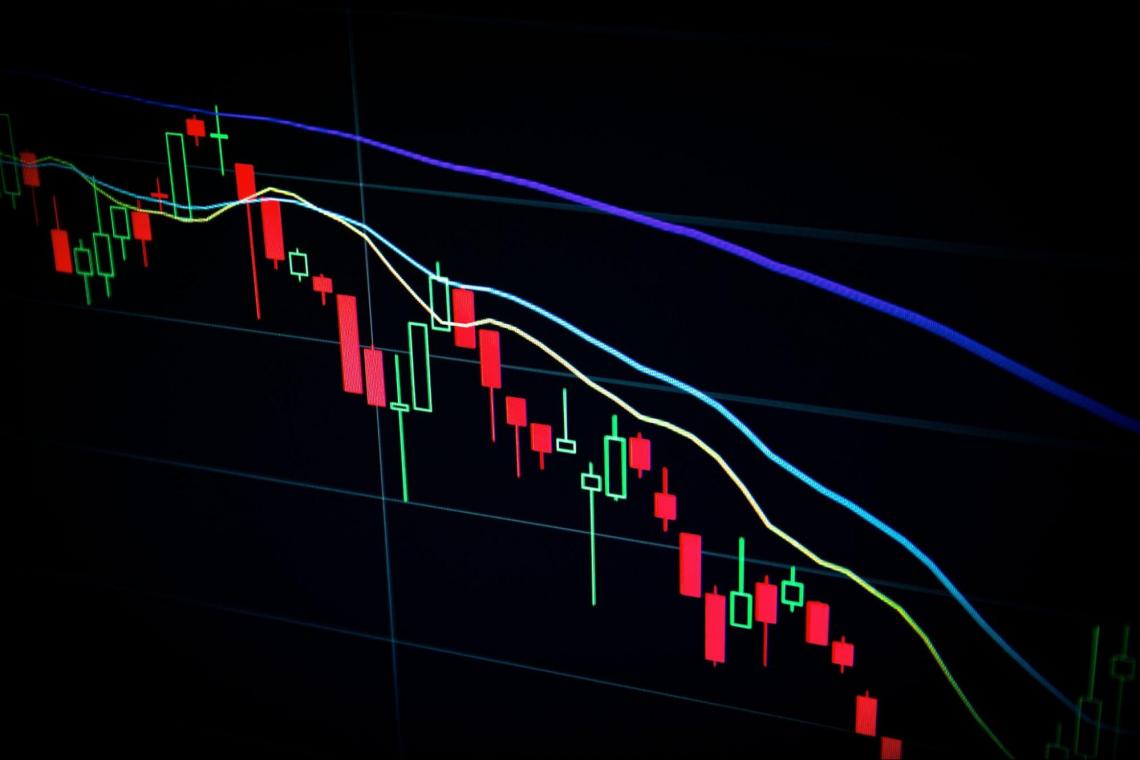Negative Interest Rate Environment
Refers to a situation when an interest rate falls below 0%.
When an interest rate falls below 0%, it is known as a negative interest rate. Two factors can trigger it: the federal funds rate, the primary economic control tool of the Fed, and yields on bonds and Treasury securities.

The cost of borrowing acts as a benchmark for rates across the economy and increases when the Fed decides to raise the interest rate. Thus, hurting growth and economic progress.
Growth is boosted when officials decide to lower interest rates since it becomes less expensive.
Although it seems illogical, government debt has traded in negative territory in many developed economies in the past, including Germany, France, Denmark, and the Netherlands, and Japan is still trading below zero.
Central banks often use monetary policy to manage interest rates and the money supply to achieve desired economic growth and inflation levels.
If inflation is high, they increase the interest rate, which tightens the money supply and, in return, helps get inflation under desired levels.

Similarly, the central bank decreases the interest rate to bring inflation to the desired levels if inflation is low.
David Lebovitz, managing director and global market strategist at J.P. Morgan Asset Management, said, "Negative rates have been one of the unconventional policy tools [used] since the global financial crisis."
How do negative interest rates work?
The Federal Reserve lowers interest rates in response to lower economic activity. When interest rates are negative, it encourages borrowers to take out loans and the banks to disperse their funds. This is a desperate move by banks to revive an economy that is experiencing cash shortages.

However, negative interest rates do not necessarily mean you'll make money on loans or return on your savings. For example, when banks borrow money from the government, the interest rates may be negative, but this isn't always the case when people borrow money from banks.
In certain situations, negative interest rates only apply to the government and not to commercial banks. However, banks still need to make money from you, increasing the cost of loans just like retailers do with their goods. As a result, the bank will often raise interest rates but not a lot, mostly just 1% to 2%.
You might be able to secure loans at reduced rates when interest rates fall. You can consider refinancing your loan at a negative annual percentage yield if your current loan has a 5 percent annual percentage yield.
This might result in hundreds of dollars in annual savings on your monthly payments, if not thousands. In addition, when interest rates are low, it gets easier and less expensive to get a home loan.

If you've been considering purchasing a property, a dip in the economy may be your best chance.
To ensure this is a wise choice, in the long run, review your finances before making any impulsive decisions just because interest rates are low. Interest rates will also return to positive, and paying EMI can become much more challenging when they do.
Which country first experimented with a Negative interest rate, and Did they work?
To confront its European debt crisis, which lasted from 2009 to the late 2010s, the European Central Bank (ECB) became the first central bank to adopt a negative interest rate policy in 2014.

That year, to prevent deflation and lift the economy out of long stagnation, the ECB reduced its deposit rate to -0.1%, the lowest it has ever been. On the other hand, deflation has been fought by the Bank of Japan (BoJ) for twenty years.
In 1999, it became the first central bank to adopt a zero-interest policy, and since 2016, its key rate has been negative to avoid its export-reliant economy from being harmed by a stronger yen.
The BOJ drives short-term rates to -0.1% and long-term rates to roughly zero through extensive asset purchases. Since then, BoJ has been unable to raise rates back into the positive range.
Following the global financial crisis and the European debt crisis in 2011–2012, short-term interest rates in the eurozone fell to the zero lower bound. However, deleveraging kept unemployment high, and deflationary forces began to build.

In response, the ECB started reducing its deposit rate in increments of 10 basis points in June 2014 and continued doing so until it finally stabilized at -0.5 percent in September 2019. The cuts aimed to increase inflation and growth through increased leverage.
According to the ECB, NIRP enhanced monetary transmission and raised inflation expectations. As a result, several central banks in Europe adopted negative policy rates to encourage financial stability and lessen deflationary pressures.
In Switzerland, Denmark, and Sweden, negative interest rates were used to discourage foreign investment and safe-haven inflows. However, as the euro zone's banking and market conditions deteriorated, capital poured into these nations; their currencies rose sharply.
As a result, the competitiveness of their export goods decreased. Additionally, the price of imports dropped, leading to deflationary pressures. However, NIRP in Switzerland, Sweden, and Denmark did contribute to halting additional, swift currency appreciation.

Nevertheless, inflationary pressures remained muted despite a pick-up in economic growth. Banks' profitability decreased when the cost of stocks, real estate, corporate bonds, and shares rose.
To combat persistent deflation and low growth that has persisted since the financial crises of the 1980s and 1990s, the Bank of Japan (BOJ) implemented negative interest rates in 2016. Government spending growth and quantitative easing were combined with negative policy rates.
Both failed to materialize, and as a result, Japan's macroeconomic dynamics have remained intact. Because banks were reluctant to shift costs onto ordinary depositors and because smaller banks were offered tier-based rates for central bank deposits.
NIRP, in particular, struggled to achieve its full potential. As a result, compared to important counterparts, the yen initially declined sharply, and asset prices rose.
How do markets get affected by negative interest rates?
The short-term rates on loans are pushed down by negative central bank rates, which affect corporate and consumer rates. When interest rates are negative, banks and other yield-seeking investors are encouraged to purchase short-term government debt, increasing prices and decreasing yields.

Additionally, the yields on government debt are connected to the rates on corporate bonds. Therefore, negative central bank rates ultimately impact bond benchmarks because they change bond market yields.
Since implementation, it results in savers being penalized and borrowers being paid—a total reversal of the circumstances everyone is used to—economists and monetary policymakers debate the usefulness of this action.
Since the policy has only sometimes been employed, it is challenging to quantify the effects of negative interest rates. As a result, banks can be cautious about passing on the burden of negative interest rates to their clients because doing so might prompt them to shift their funds.
In these circumstances, negative interest rates would reduce bank earnings and deter them from making loans.

A bank run—which has occurred on several occasions throughout history—can happen when customers who are charged for having cash in an account decide to withdraw the money all at once from the financial system.
This has had a considerably more significant positive effect on the foreign currency market. Investors frequently seek higher profits abroad when negative interest rates affect their currency's value.
Pros and Cons of Negative Interest Rate Environment
Following the global financial crisis, many advanced economies implemented negative interest rate policies as central banks sought to address the low inflation and sluggish development.

By encouraging borrowers and businesses to borrow and spend money, negative interest rates aim to prevent deflation. However, this strategy's results are hard to measure because it has only been used a handful of times.
Pros:
1. In a negative interest rate environment, borrowing becomes cheaper for individuals and organizations. Over time, this could further energize the economy and promote growth. In addition, a negative to low-interest rate makes access to everything much more accessible.
2. Reduced borrowing rates also make homes more accessible, stimulating the housing market growth, particularly in times of slow economic development or when the economy is just emerging from a recession.

The cost of making mortgage payments each month also decreases when interest rates decline, increasing asset values.
3. A decline in interest rates increases projects' economic viability and increases businesses' readiness to borrow money and undertake investments. In addition, more goods are produced, which lowers prices.
4. When a business grows, more jobs become available, which lowers the unemployment rate. In a low-interest rate environment, People can also benefit from cheaper credit card interest rates and pay off their obligations more rapidly.
Cons:
Negative interest rates come with several concerns. They could cause asset price bubbles, encourage excessive cash holding, lower bank profitability by decreasing interest rate income, or lower the yield on pension savings.

1. Low-interest rates frequently penalize those who ought to be rewarded for their frugal behavior. A low-interest rate environment may boost growth and consumption, but it also adversely affects household savings.
2. Lower rates hurt those who get interest payments from savings accounts, fixed deposits, or other bank-sponsored programs, which makes consumers less motivated to save. In addition, as borrowing costs decrease, debt levels are anticipated to rise for both households and corporations.
3. An influx of cash into the system can cause the economy to overheat, which can cause issues with the excess flow of goods and commodities of all kinds through the supply chain. In addition, this rise in demand could trigger a sharp rise in inflation.
4. Since borrowing money is cheaper when interest rates are lower, lower interest rates reduce the return on savings while simultaneously lowering borrowing costs. In addition, since money is easily accessible, obtaining a loan is relatively affordable.

5. Negative interest rates adversely affect banks' profitability because, in negative territory, there is a gap in the credit channel because banks are unwilling to pass on policy rate reductions to their depositors, especially consumers, after they reach a certain level.
As banks internalize the effects of declining NIMs, they must change their approach to earn profits elsewhere.
- The purpose of a negative interest rate is to encourage banks to lend or invest their excess reserves rather than hoard cash, which will, in turn, help the economy thrive.
- According to the premise, when interest rates go below zero, people, businesses, and banks will spend money rather than save it, which will help boost the economy.
- It is thought that a low-interest rate environment will increase bank lending, consumer spending, company investment, and household spending.
- Because it is difficult and expensive to transfer and hold significant sums of physical currency, some institutions are nevertheless willing to give negative interest on deposits. However, if the interest rate is low enough, it will start to outweigh the cost of storage.
- Negative interest rate environments penalize banks for hoarding funds rather than making loans. Theoretically, they should lower borrowing costs for individuals, businesses, and households, promoting increased borrowing and injecting more money into the economy.




or Want to Sign up with your social account?